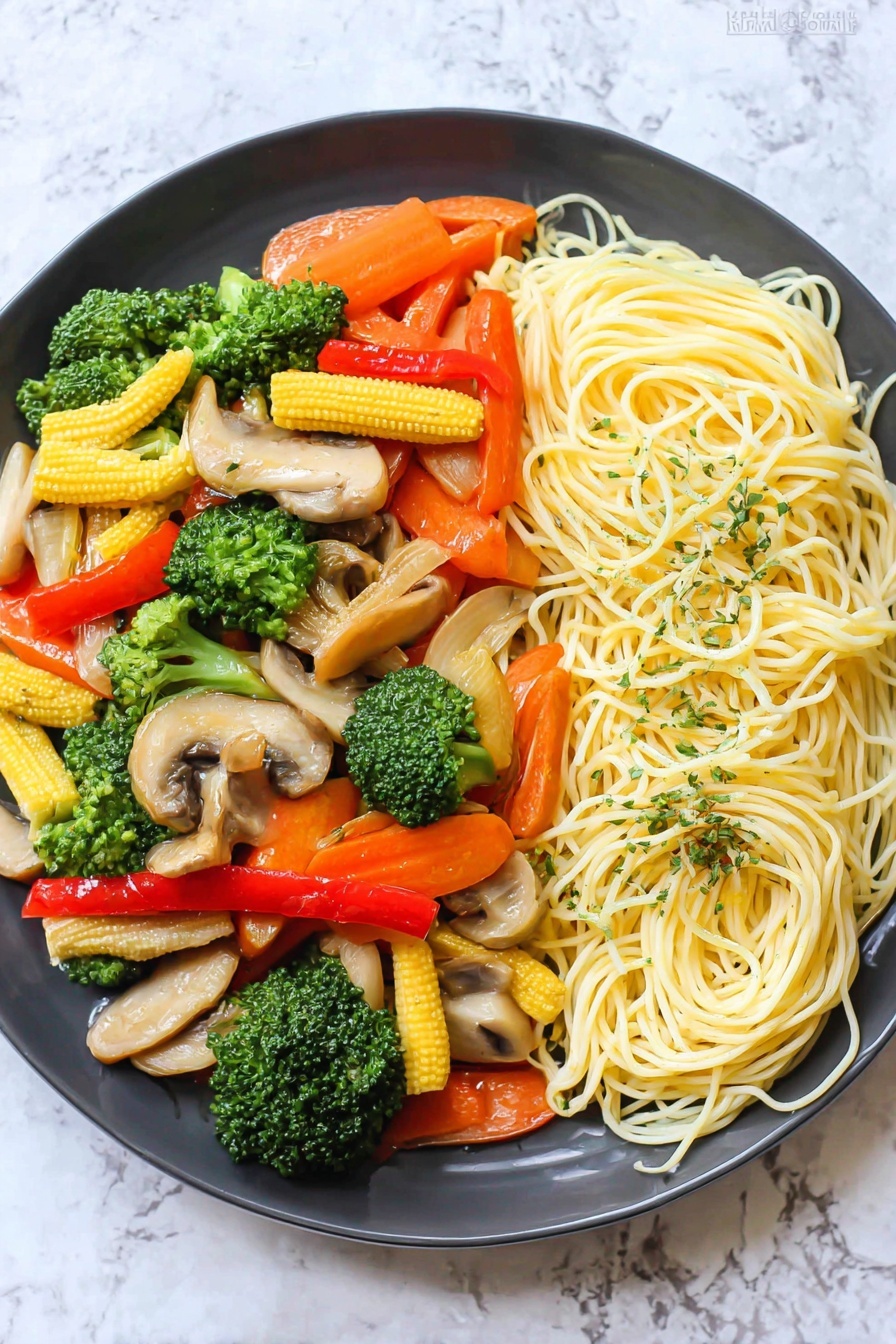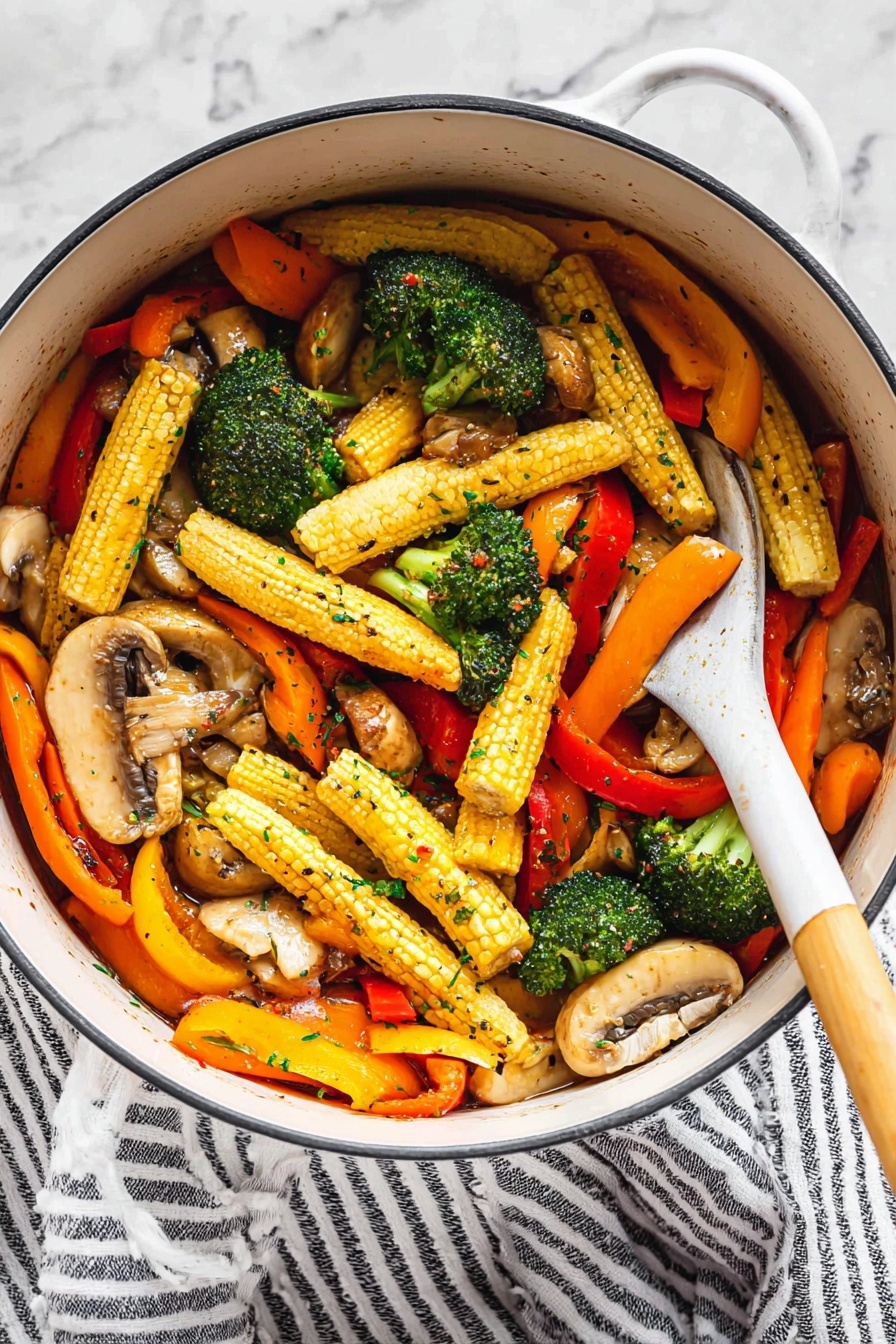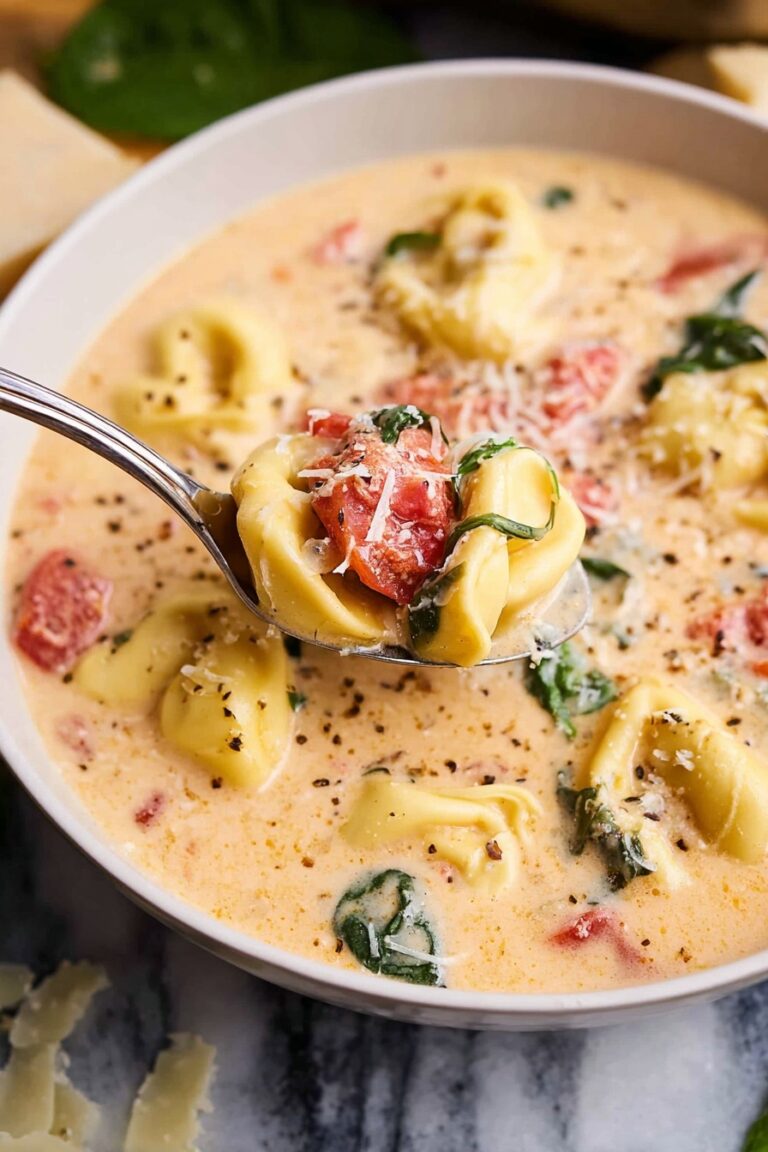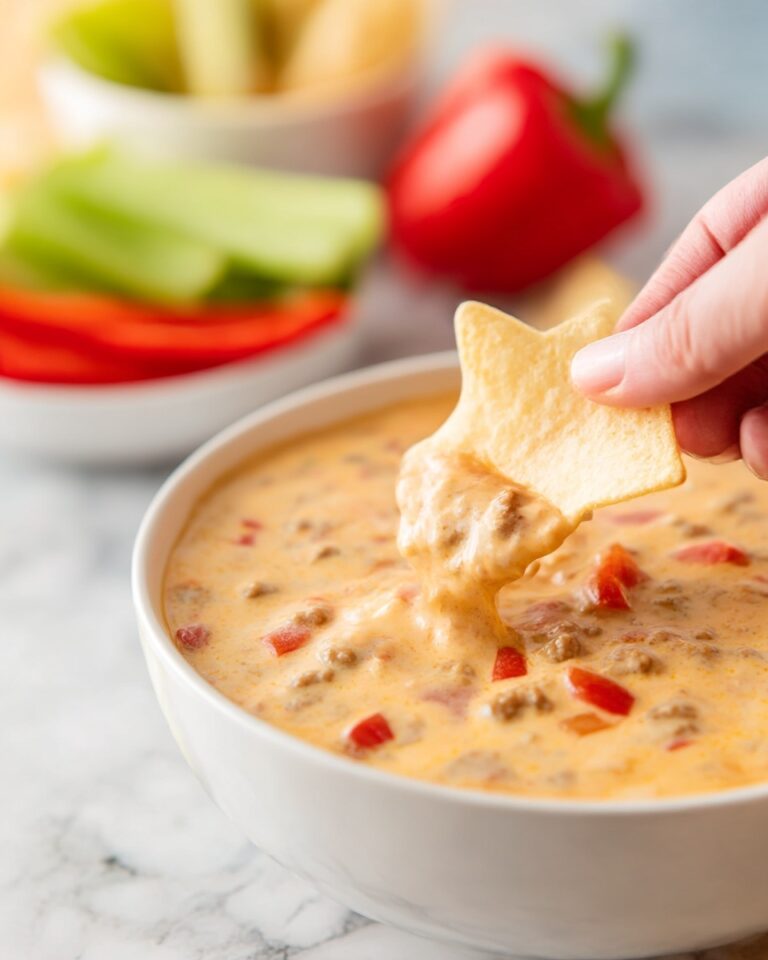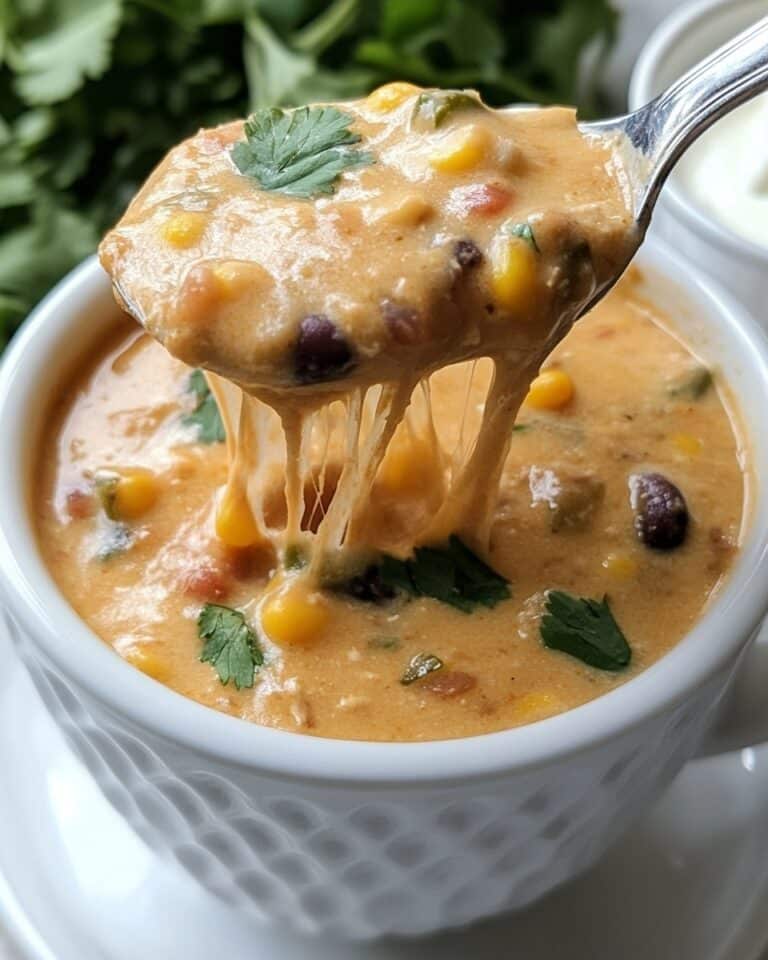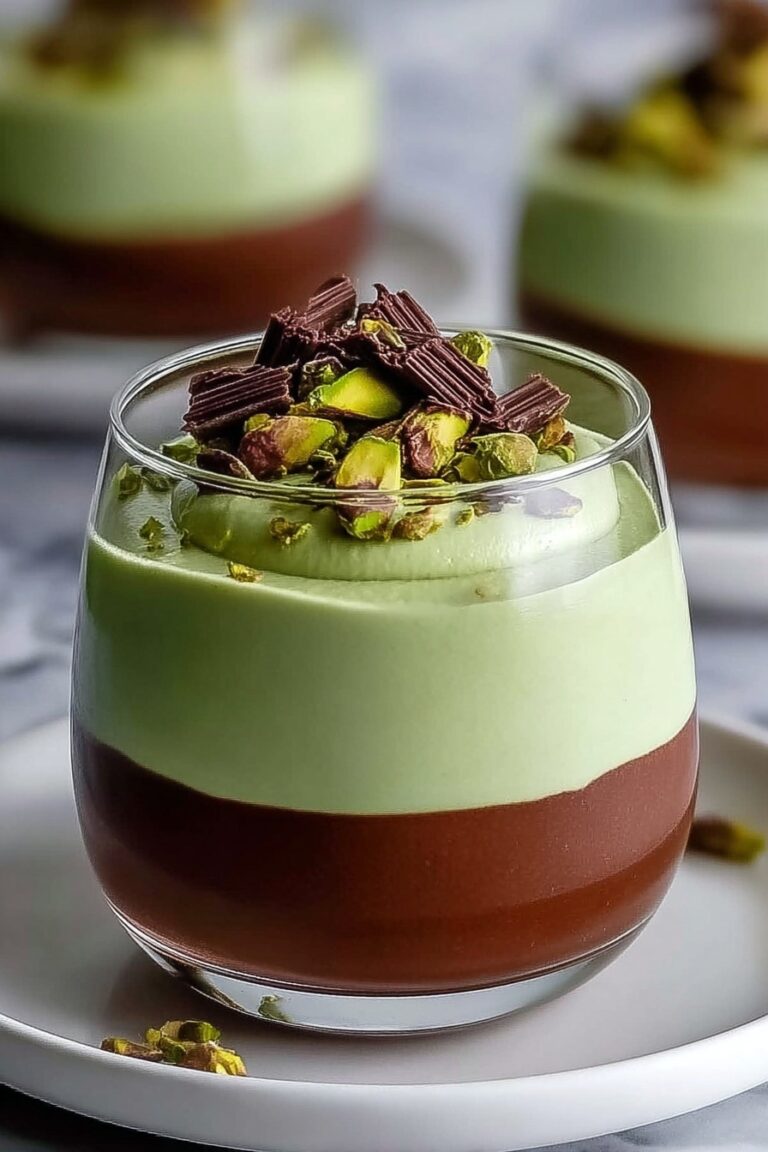Vegetable Stir Fry Recipe
If you’re looking for a quick, colorful, and absolutely delicious way to get your veggies in, you’re going to love this Vegetable Stir Fry Recipe. It’s one of those dishes that feels fancy enough for guests but is simple enough for a busy weeknight. Plus, the sauce is a perfect balance of savory, sweet, and a little kick of heat that’ll have you craving it again and again. Stick around—I’m going to share how I make this every time, with tips to get it just right.
Why This Recipe Works
- Balanced Sauce: The combo of honey, soy sauce, and broth creates a sauce that’s sweet, salty, and just a little tangy—a crowd-pleaser every time.
- Crisp-Tender Veggies: Stir-frying veggies quickly over high heat locks in their crunch and vivid colors.
- Flexible Ingredients: You can swap veggies or proteins to match what you have on hand, making it super versatile.
- Simple & Quick: The whole dish comes together in under 30 minutes, perfect for busy days when you want something wholesome fast.
Ingredients & Why They Work
The magic of this Vegetable Stir Fry Recipe lies not just in the sauce but in the freshness and variety of vegetables combined with just the right aromatics. I always try to choose crisp, firm veggies that cook evenly and hold their texture well.
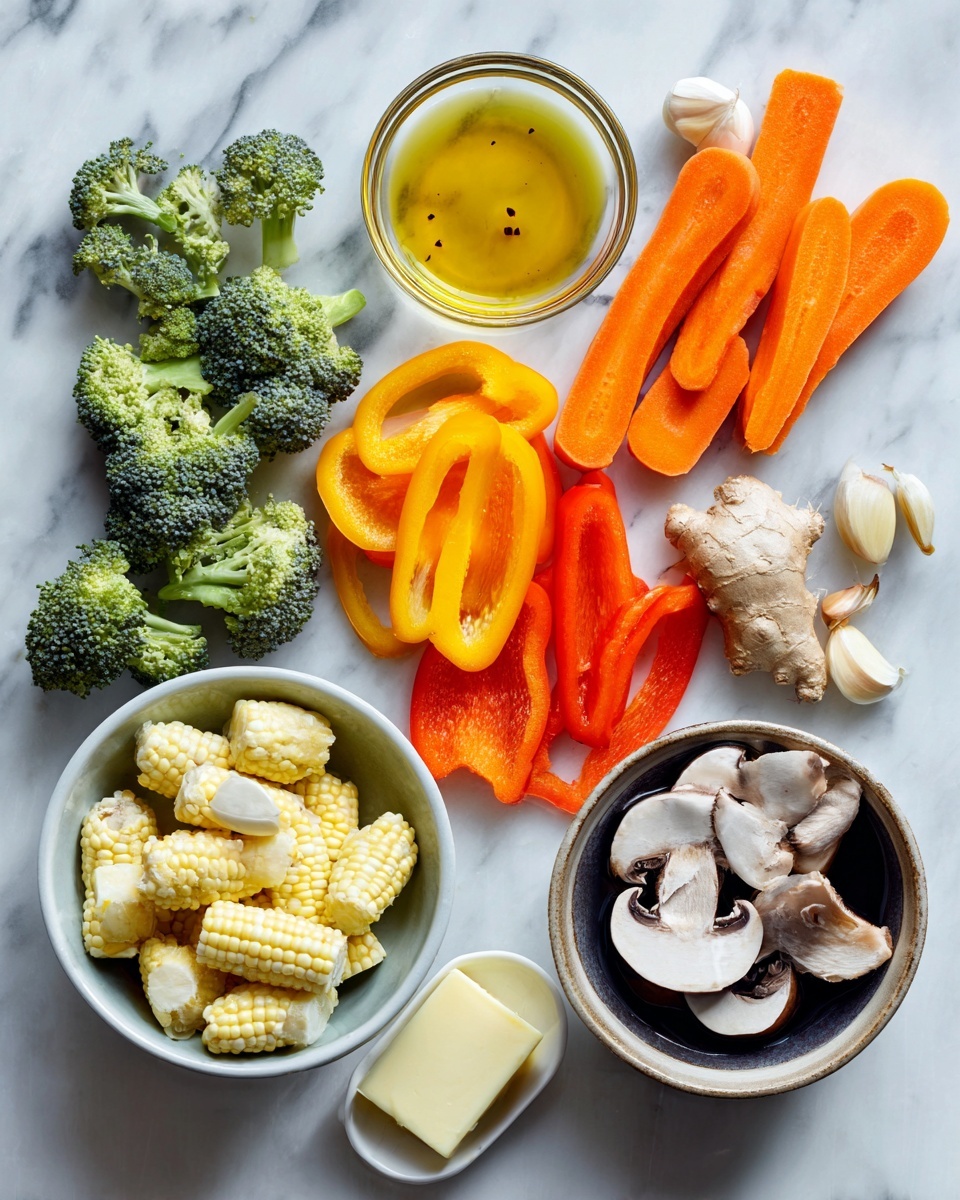
- Chicken or Vegetable Broth: Adds depth and richness to the sauce, making it more than just soy and sugar.
- Soy Sauce or Tamari: Provides that signature umami and saltiness; tamari is great if you need gluten-free.
- Corn Starch: This is the secret to thickening your stir fry sauce so it clings perfectly to every veggie piece.
- Honey: Balances the saltiness with a touch of natural sweetness and helps with caramelization.
- Hot Sauce: Optional, but a splash adds a nice kick—I’m partial to Sriracha for this.
- Carrot: Adds a pop of color and sweetness, plus that satisfying crunch.
- Broccoli Florets: My personal favorite for texture and nutrition—they hold their shape beautifully.
- Baby Corn Spears: They offer a fun bite and sweetness that’s different from usual stir fry veggies.
- Mushrooms: Bring an earthy flavor and soak up that delicious sauce.
- Bell Pepper: Adds color, crunch, and a slight sweetness.
- Cooking Oil (Extra Light Olive or Canola): Has a high smoke point perfect for stir-frying without burning.
- Unsalted Butter: Adds a silky richness and helps marry the flavors.
- Garlic and Ginger: Essential aromatics that give the stir fry its bright, fragrant foundation.
Make It Your Way
One of my favorite things about this Vegetable Stir Fry Recipe is how easy it is to make it yours. Over the years, I’ve swapped out veggies based on what’s in season or what’s languishing in my fridge, and I encourage you to do the same!
- Variation: I once added some grilled chicken strips and cashews to the stir fry—it felt like takeout but healthier and fresher, and my family loved it.
- Dietary Swap: For a vegan version, simply use vegetable broth and swap the butter for a plant-based spread.
- Seasonal Twist: When asparagus or snow peas are in season, I’m all about tossing them in for a burst of spring freshness.
- Heat Level: If you’re a heat lover, a few more dashes of hot sauce or some crushed red pepper flakes make this zingier.
Step-by-Step: How I Make Vegetable Stir Fry Recipe
Step 1: Whip Up That Sauce First
I always start by mixing the stir fry sauce in a small bowl. Combining chicken or veggie broth with soy sauce, honey, cornstarch, and a touch of heat makes this step super important because the cornstarch needs a bit of time to dissolve evenly. I give it a good stir so there are no clumps and set it aside—this way it’s ready when my veggies are cooked just right.
Step 2: Sizzle the Veggies to Crisp-Tender Perfection
Heat your pan (I love a wok for this, but a large non-stick skillet works just as well) over medium-high heat, add the oil until it’s shimmering bright, and toss in your prepped vegetables. Stir frequently—just about 3 minutes—to ensure everything cooks evenly without losing that wonderful crunch. Overcooking here is a common mistake—trust me, I’ve learned that lesson—nobody likes soggy stir fry veggies!
Step 3: Add Butter, Garlic, & Ginger for That Flavor Punch
Turn the heat down to medium, toss in the butter, and immediately add your minced garlic and ginger. Stir constantly for just 30 to 60 seconds until you start smelling that irresistible aroma. This step wakes up the dish and layers in deep, homey flavor.
Step 4: Bring It All Together with the Sauce
Give that sauce another quick stir—sometimes the cornstarch settles—and pour it over your veggies. Lower the heat to medium-low and let it cook for 3 to 4 minutes. The sauce will thicken and coat the vegetables beautifully. I use this time to test for tenderness because everyone’s preference is different; some like it crunchier, and I’m happy either way.
Tips from My Kitchen
- Prepping in Advance: I chop all veggies in advance and keep them separate so stir-frying takes just minutes.
- High Heat is Key: Using a hot pan keeps veggies crisp and prevents them from releasing too much water.
- Avoid Frozen Veggies: Frozen tend to get soggy and water down the sauce, so fresh is best here.
- Don’t Skip Butter: It might sound indulgent, but it adds body and richness you don’t want to miss.
How to Serve Vegetable Stir Fry Recipe
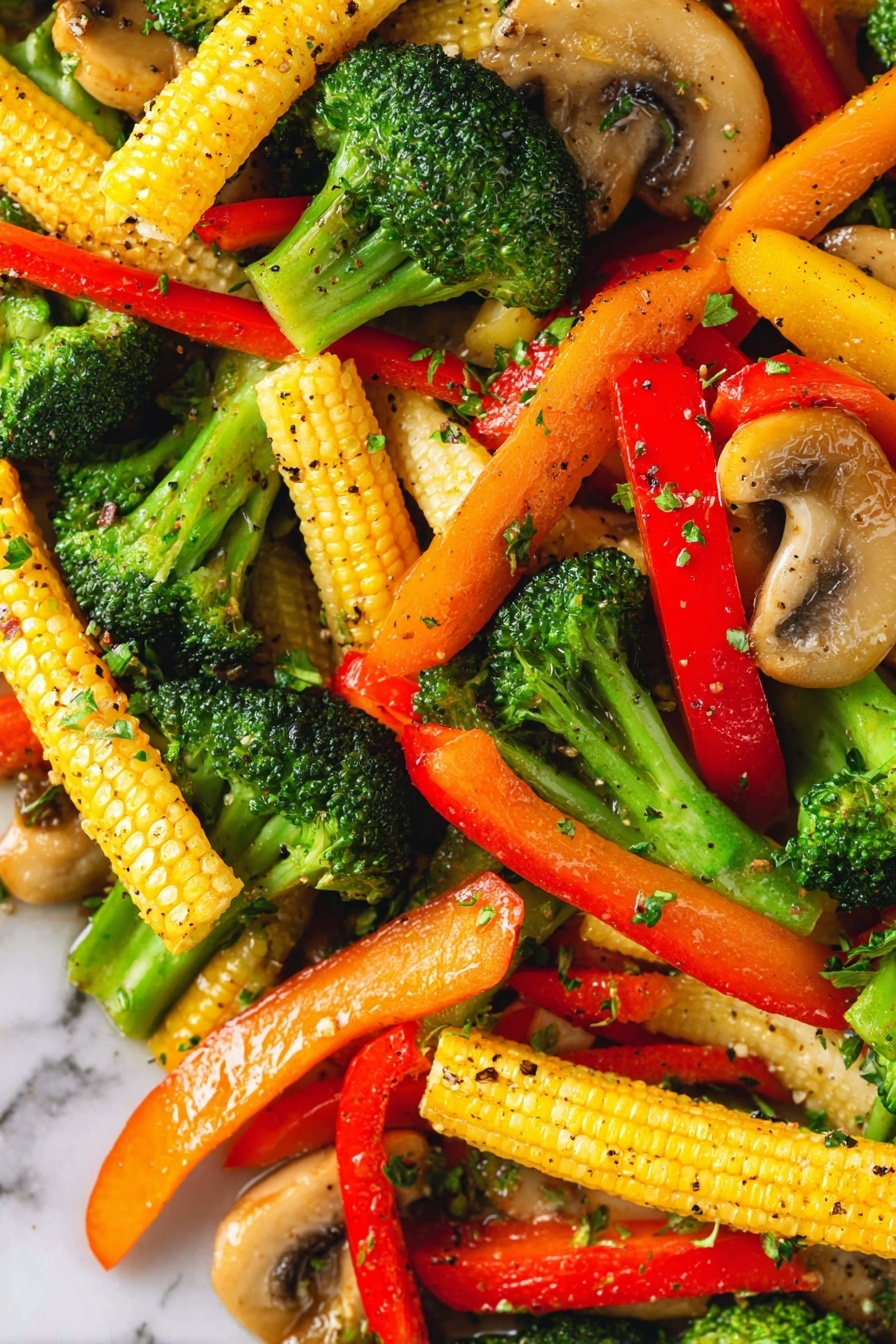
Garnishes
I love adding a sprinkle of toasted sesame seeds and chopped green onions on top. It adds a little crunch and visual appeal. Sometimes I finish with a drizzle of sriracha or a few crushed peanuts to bring an extra layer of texture and spice. Fresh cilantro or basil can also brighten the dish if you want a fresh herbal note.
Side Dishes
For a fuller meal, I serve this stir fry alongside fluffy jasmine rice or steamed brown rice. Sometimes I whip up some simple vegetable fried rice to go with it for a carb boost. If you want something lighter, try it wrapped in lettuce leaves for a fresh, crunchy contrast.
Creative Ways to Present
For dinner parties, I like to serve the Vegetable Stir Fry Recipe in mini cast iron skillets or over a bed of noodles tossed in toasted sesame oil. Another fun idea is individual rice bowls, where everyone customizes with their favorite toppings—nuts, sliced avocado, or even a fried egg on top. It makes dinner feel interactive and special.
Make Ahead and Storage
Storing Leftovers
I usually let the stir fry cool down a bit, then transfer leftovers into airtight containers to keep the veggies from getting soggy. Stored this way in the fridge, it stays fresh for up to 4 days—perfect for quick lunches or dinner the next day.
Freezing
Freezing works okay if you’re in a pinch, but the texture of some veggies can change a bit once thawed. I recommend freezing only if you make it with more hearty vegetables and avoid baby corn or mushrooms, as they get softer after freezing.
Reheating
The best way to reheat vegetable stir fry is in a skillet over medium heat with a splash of water or broth to refresh the sauce and prevent sticking. Microwave works too, but you might lose a tad of crispness. Either way, heat just until warmed through to keep veggies vibrant and fresh.
FAQs
-
Can I make this Vegetable Stir Fry Recipe vegan?
Absolutely! Just swap the chicken broth for vegetable broth, replace the butter with a vegan margarine or oil, and ensure the soy sauce you use is vegan-friendly. It tastes just as good with these changes!
-
What’s the best way to keep veggies crisp in stir fry?
Using high heat and cooking veggies for a short time is key. Also, avoid overcrowding the pan so the veggies steam instead of fry. Fresh, firm vegetables work best for that perfect crunch.
-
Can I prepare the stir fry sauce ahead of time?
Yes! The sauce can be mixed and stored in the fridge for up to 2 days. Just give it a quick stir before adding it to the veggies when cooking.
-
What are some good protein additions to this recipe?
Cooked chicken, shrimp, tofu, ground pork, or beef all complement the flavors well. Just add them towards the end to warm through so they don’t overcook.
-
Is it okay to use frozen vegetables?
Fresh vegetables are preferable because frozen ones can release extra water and make the dish soggy. If you must use frozen, thaw and drain them very well before cooking and be prepared for a softer texture.
Final Thoughts
This Vegetable Stir Fry Recipe has a special place in my weeknight rotation because it’s quick, vibrant, and really hits the spot for healthy comfort food. It’s flexible enough to suit whatever’s in your fridge and can be adjusted for spice, sweetness, or protein as you like. I hope you give it a try—you’ll find it as reliable and satisfying as I do, and it might just become your go-to for easy, nutritious dinners!
Print
Vegetable Stir Fry Recipe
- Prep Time: 10 minutes
- Cook Time: 15 minutes
- Total Time: 25 minutes
- Yield: 4 servings
- Category: Main Course
- Method: Stovetop
- Cuisine: Asian
- Diet: Vegetarian
Description
This vibrant Vegetable Stir Fry recipe features a medley of fresh vegetables cooked to crisp-tender perfection and tossed in a savory stir fry sauce. It’s a quick, flavorful, and healthy dish perfect for a weeknight meal or a nutritious vegetarian option.
Ingredients
Stir Fry Sauce
- 1/4 cup chicken broth (or vegetable broth for vegetarian)
- 3 Tbsp low-sodium soy sauce (use Tamari for gluten-free) or 2 Tbsp regular soy sauce
- 1 tsp corn starch
- 2 Tbsp honey
- 1/4 tsp hot sauce (optional, Frank’s or Sriracha)
Vegetable Stir Fry
- 1 large carrot, sliced
- 2 cups medium broccoli florets
- 8 oz can baby corn spears, drained
- 8 oz mushrooms (white or brown), sliced or quartered
- 1 whole pepper (red, yellow, or orange), seeded and sliced
- 2 Tbsp cooking oil (extra light olive oil or canola)
- 2 Tbsp unsalted butter
- 3 garlic cloves, peeled and minced
- 2 tsp ginger, minced
Instructions
- Make stir fry sauce: In a small bowl, combine the chicken or vegetable broth, soy sauce, corn starch, honey, and optional hot sauce. Stir well to incorporate the corn starch fully, then set aside until ready to use.
- Sauté the veggies: Heat a large non-stick skillet or wok over medium-high heat and add the cooking oil. Once the oil is hot and shimmering, add the sliced carrot, broccoli florets, baby corn, mushrooms, and sliced pepper. Stir-fry the vegetables for about 3 minutes or until they are just crisp-tender, being careful not to overcook.
- Add aromatics: Reduce the heat to medium and add the unsalted butter, minced garlic, and minced ginger to the skillet. Stir constantly for 30 to 60 seconds until fragrant and well combined with the vegetables.
- Add the stir-fry sauce: If the sauce has separated, stir it again and then pour it over the vegetables. Reduce the heat to medium-low and cook for 3 to 4 minutes, stirring occasionally, until the sauce thickens and the vegetables reach your preferred tenderness.
Notes
- Variations: Add cooked protein such as chicken, shrimp, ground beef, ground pork, or tofu for a more filling meal.
- Vegetables: Swap with your preferred fresh vegetables, but avoid frozen vegetables to prevent a watery sauce and mushy texture.
- Nuts and Seeds: Add peanuts, cashews, or your favorite seeds for crunch and extra flavor.
- Make Ahead: Prepare and store vegetables and sauce separately in the refrigerator until ready to cook.
- Storage: Keep leftovers in an airtight container refrigerated for up to 4 days.
- Reheating: Reheat by sautéing in a large pan over low heat until warmed through.
Nutrition
- Serving Size: 1 serving
- Calories: 180 kcal
- Sugar: 8 g
- Sodium: 450 mg
- Fat: 9 g
- Saturated Fat: 3 g
- Unsaturated Fat: 6 g
- Trans Fat: 0 g
- Carbohydrates: 22 g
- Fiber: 5 g
- Protein: 4 g
- Cholesterol: 10 mg

